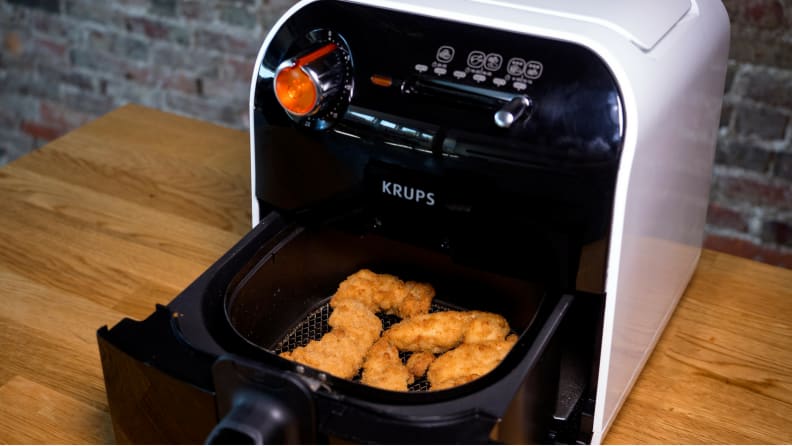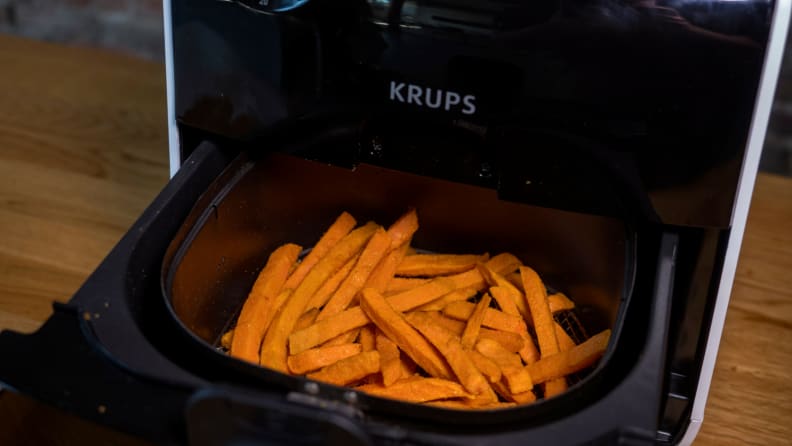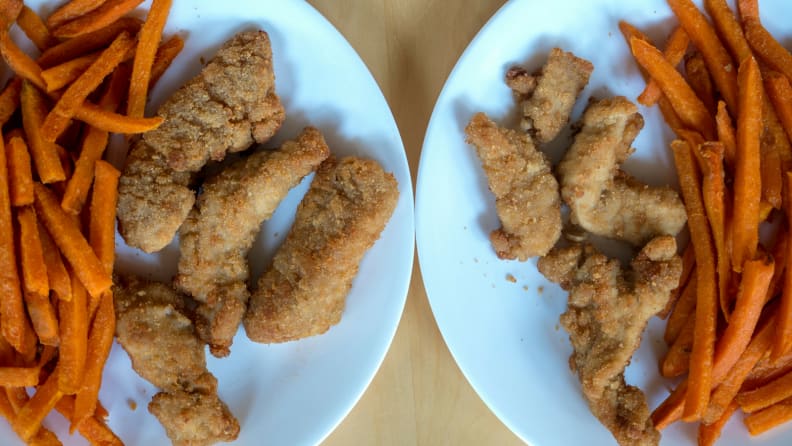Air fryers are the next hot kitchen gadget—here's why you don't need one
Rule of thumb: if it sounds too good to be true, it is.
Products are chosen independently by our editors. Purchases made through our links may earn us a commission.
The mysterious air fryer—a kitchen appliance that’s been crowding Amazon wishlists and shelves at Sur La Table since 2015—sounds more like a secret that wizards keep from Muggles in the Harry Potter universe than an actual product you could purchase at this very moment.
It promises to produce crispy, crunchy foods like french fries and breaded chicken with just a drizzle of oil and in a fraction of the time of baking. For its health benefits, it’s been endorsed by the hard-to-please Gordon Ramsay, and the kinder (but no less discerning) Oprah Winfrey. Many consumers are obsessed, but no less puzzled—how can science produce straight-out-of-the-fryer taste from thin air?

Air fryers aren't magic—they're small convection ovens.
The short answer? It can’t, and it doesn’t.
The name “air fryer” is a misnomer—the gadget is actually just a small convection oven that holds something resembling a fry basket. Using convection technology (AKA small fans), the “fryer” circulates hot air around the foods in the basket, cooking them quicker then traditional baking and crisping up the outermost layer.
But here’s the catch: unlike proper frying, which produces this crispness while preserving the tender interior of the meat or veggies you’re cooking, air frying risks drying out the entire product completely.
Still think the air fryer sounds pretty neat? Read on to learn why it’s a waste of your money—and what you should invest in instead.
Don’t let the ads fool you—it doesn’t taste the same
Despite companies’ claims that their air fryers produce results comparable to deep- or pan-frying, our previous testing and my own experience debunk that claim. Air frying produces a texture and flavor closer to baking (because, again, it’s literally just a small convection oven) than to proper frying.
Like most everyone, I care about what I put into my body, and I know enough about nutrition science to understand that french fries should not be a diet staple. But even with my health in mind, I subscribe to the Chrissy Teigen philosophy of eating—if I’m going to be counting calories or limiting entire food groups, I’m going to make sure every single thing I eat is as delicious as possible.
Unfortunately, air fryers are almost never going to make foods taste the best they possibly can. I would much rather eat a handful of perfectly-crisped fries than an entire basket of dry ones produced in an air fryer. It makes more sense to enjoy fried foods on occasion than to water down your fried food experience with this device.
The results are inconsistent
Even if you are satisfied with the air fryer’s facsimile of fried flavor and texture, and you’re eager to eat as many almost-fried foods as possible, most air fryers can’t give you consistent results. While they tend to excel at cooking frozen foods, many models struggle to cook fresh veggies, potatoes and meat evenly without leaving burnt or raw spots. A smaller model of our top pick for air fryers, the Philips Airfryer XXL, produced dry, unevenly cooked french fries that couldn’t compare to their deep-fried counterparts.
If you load up the basket with a lot of product at once, you’ll be required to open and mix up the food to prevent uneven cooking and burning. You’re better off loading up an entire cookie tray with fresh cut potatoes or veggies and baking them to get even crispness.

Air fryers work well with frozen foods, but can't evenly cook raw foods the way ovens and fryers can.
It’s a space-hogging eyesore
There are plenty of large, cumbersome countertop appliances that are too precious to live without, like a KitchenAid stand mixer or an Instant Pot. An air fryer isn’t one of them.
The gadgets tend to have bulky, pod-like designs that make them difficult to store away, and when out on the counter, they’re not a very pretty sight. Their plain plastic exteriors are prone to smudging with oily fingerprints, and give them an altogether cheap appearance. That’s the last thing you want to hear about a product that cost anywhere from $100 to $400.
The awkward size and construction means you have to manually remove and wash the fry basket, as well as the larger container in which it sits. The air fryer isn’t sleek or countertop friendly—and if you already own a convection oven or toaster oven, you’re doubling up on the same technology.

On the left is frozen chicken fingers and sweet potatoes fries prepared with the Krups Fry Delight air fryer, and on the right is the same prepared with a convection toaster oven. The results are very similar.
A convection oven—or toaster oven—can do all this and more
If you’re truly looking for a healthy alternative to frying, why not try a convection toaster oven? They employ the same exact technology, but have the added bonus of being something you already use all the time for a million other foods that aren’t frozen fries or chicken fingers. They’re leaner, cleaner, and endlessly more useful than their mysterious fryer cousins. Oh, and most models are the same price if not cheaper. If you step up to investing in an entire convection oven, your capacity issues disappear completely, and you can fake-fry, bake, and broil to your heart’s content.
And if you’re finishing up this article and just want some honest-to-god fried chicken, grab our favorite value Dutch oven and some oil and get to frying.
